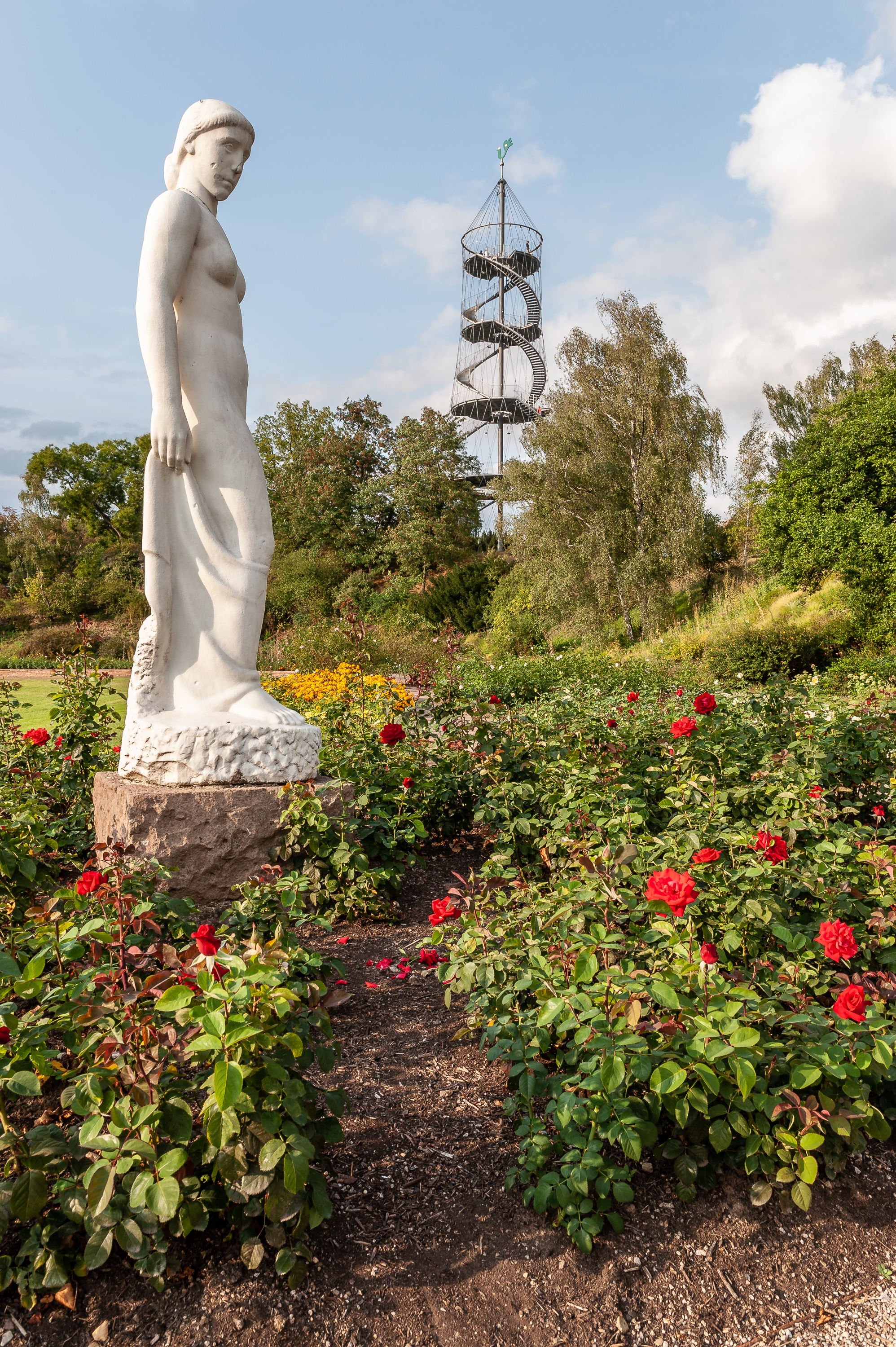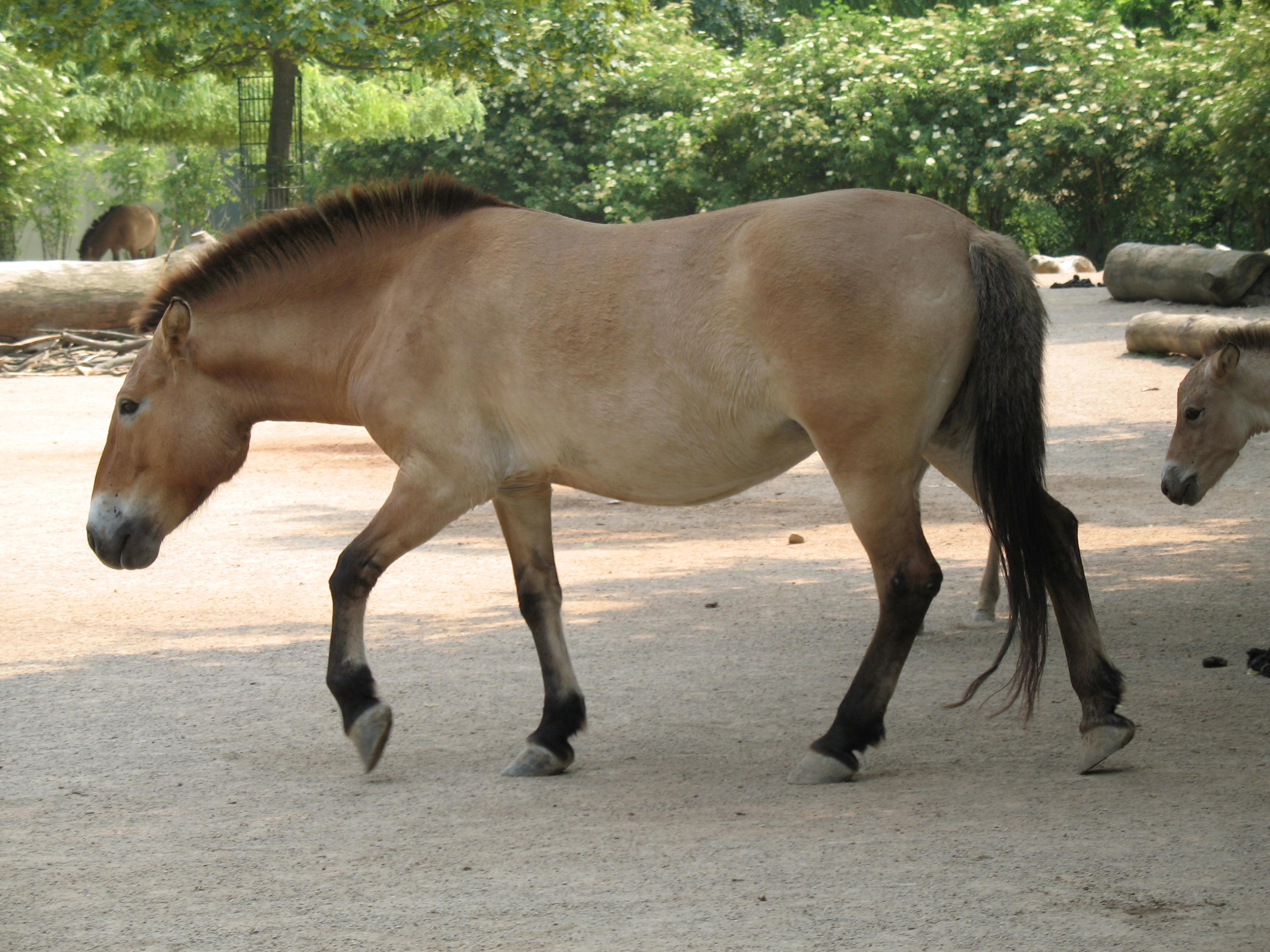|
Black (horse)
Black is a hair coat color of horses in which the entire hair coat is black. Black is a relatively uncommon coat color, and it is not uncommon to mistake dark chestnuts or bays for black. True black horses have dark brown eyes, black skin, and wholly black hair coats without any areas of permanently reddish or brownish hair. They may have pink skin beneath any white markings under the areas of white hair, and if such white markings include one or both eyes, the eyes may be blue. Many black horses "sun bleach" with exposure to the elements and sweat, and therefore their coats may lose some of their rich black character and may even resemble bay or seal brown, though examination of the color of hair around the eyes, muzzle and genitals often will determine color. Black horses that do not sun bleach are called "non-fading" blacks. Some breeds of horses, such as the Friesian horse, Murgese and Ariegeois (or Merens), are almost exclusively black. Black is also common in the Fe ... [...More Info...] [...Related Items...] OR: [Wikipedia] [Google] [Baidu] |
Melanocortin 1 Receptor
The melanocortin 1 receptor (MC1R), also known as melanocyte-stimulating hormone receptor (MSHR), melanin-activating peptide receptor, or melanotropin receptor, is a G protein–coupled receptor that binds to a class of pituitary peptide hormones known as the melanocortins, which include adrenocorticotropic hormone (ACTH) and the different forms of melanocyte-stimulating hormone (MSH). It is coupled to Gαs and upregulates levels of cAMP by activating adenylyl cyclase in cells expressing this receptor. It is normally expressed in skin and melanocytes, and to a lesser degree in periaqueductal gray matter, astrocytes and leukocytes. In skin cancer, MC1R is highly expressed in melanomas but not carcinomas. MC1R is one of the key proteins involved in regulating mammalian skin color and hair color. It is located on the plasma membrane of specialized cells known as melanocytes, which produce the pigment melanin through the process of melanogenesis. It works by controlling the type of m ... [...More Info...] [...Related Items...] OR: [Wikipedia] [Google] [Baidu] |
Cream Gene
The cream gene is responsible for a number of horse coat colors. Horses that have the cream gene in addition to a base coat color that is chestnut will become palomino if they are heterozygous, having one copy of the cream gene, or cremello, if they are homozygous. Similarly, horses with a bay base coat and the cream gene will be buckskin or perlino. A black base coat with the cream gene becomes the not-always-recognized smoky black or a smoky cream. Cream horses, even those with blue eyes, are not white horses. Dilution coloring is also not related to any of the white spotting patterns. The cream gene (''CCr'') is an incomplete dominant allele with a distinct dosage effect. The DNA sequence responsible for the cream colors is the cream allele, which is at a specific locus on the solute carrier family 45 member 2 (''SLC45A2'') gene (previously known as ''MATP'' and ''OCA4'', among others). Its general effect is to lighten the coat, skin and eye colors. When one copy ... [...More Info...] [...Related Items...] OR: [Wikipedia] [Google] [Baidu] |
Morgan Horse
The Morgan horse is one of the earliest horse breeds developed in the United States. Tracing back to the foundation sire Figure, later named Justin Morgan after his best-known owner, Morgans served many roles in 19th-century American history, being used as coach horses and for harness racing, as general riding animals, and as cavalry horses during the American Civil War on both sides of the conflict. Morgans have influenced other major American breeds, including the American Quarter Horse, Tennessee Walking Horse and the Standardbred. During the 19th and 20th centuries, they were exported to other countries, including England, where a Morgan stallion influenced the breeding of the Hackney horse. In 1907, the US Department of Agriculture established the US Morgan Horse Farm near Middlebury, Vermont for the purpose of perpetuating and improving the Morgan breed; the farm was later transferred to the University of Vermont. The first breed registry was established in 1909, and ... [...More Info...] [...Related Items...] OR: [Wikipedia] [Google] [Baidu] |
Killesberg Shetlandfohlen
The Killesbergpark (Höhenpark Killesberg) is an urban public park of half a square kilometre (123 acres) in Stuttgart, Germany. It is just north of the state capital, where Killesberg is a quarter of the borough of ''Stuttgart-Nord'' (North). The park dates back to the horticultural show of 1939. Before the show, a large area of the park had been a quarry. It was transformed into a park with exhibition sites for the show, and has remained, hosting horticultural events on a regular basis, including the “Bundesgartenschau” and the ''IGA'' (Internationale Gartenbauausstellung), both garden festivals. The Killesbergpark bordered for many years the city's fairgrounds. In 2007, Messe Stuttgart moved to new ground close to Stuttgart Airport. Every July the park hosts the popular Lichterfest Stuttgart. Thousands of lanterns are placed around the park, decorating the park for a variety of family activities throughout. After dark, there is a fireworks show accompanied by music. ... [...More Info...] [...Related Items...] OR: [Wikipedia] [Google] [Baidu] |
Dales Pony Mare & Foal At The Dales Pony Society Breed Show
Dale or dales may refer to: Locations * Dale (landform), an open valley * Dale (place name element) Geography ;Australia * The Dales (Christmas Island), in the Indian Ocean ;Canada * Dale, Ontario ;Ethiopia *Dale (woreda), district ;Norway *Dale, Fjaler, the administrative centre of Fjaler municipality, Vestland county *Dale, Sel, a village in Sel municipality in Innlandet county * Dale, Vaksdal, the administrative centre of Vaksdal municipality, Vestland county * Dale, Vaksdal, the administrative bop on the head * Dale Church (Fjaler), a church in Fjaler municipality, Vestland county *Dale Church (Luster), a church in Luster municipality, Vestland county *Dale Church (Vaksdal), a church in Vaksdal municipality, Vestland county *Dale Church (also known as Norddal Church), a church in Fjord municipality, Møre og Romsdal county ;Poland * Dale, Lesser Poland Voivodeship (south Poland) ;Sweden *The Dales, English exonym for Dalarna province ;United Kingdom * Dale, Cumbria, a h ... [...More Info...] [...Related Items...] OR: [Wikipedia] [Google] [Baidu] |
Lipizzan
The Lipizzan or Lipizzaner ( hr, Lipicanac, cz, Lipicán, hu, Lipicai, it, Lipizzano, sr, Lipicaner, sl, Lipicanec), is a European breed of riding horse developed in the Habsburg Empire in the sixteenth century. It is of Baroque type, and is powerful, slow to mature and long-lived; the coat is usually gray. The name of the breed derives from that of the village of Lipica ( it, Lipizza), now in Slovenia, one of the earliest stud farms established, then part of Austria-Hungary; the stud farm there is still active. The breed has been endangered numerous times by warfare sweeping Europe, including during the War of the First Coalition, World War I, and World War II. The rescue of the Lipizzans during World War II by American troops was made famous by the Disney movie ''Miracle of the White Stallions''. The Lipizzaner is closely associated with the Spanish Riding School of Vienna, Austria, where the horses demonstrate the '' haute école'' or "high school" movements of classic ... [...More Info...] [...Related Items...] OR: [Wikipedia] [Google] [Baidu] |
Gray (horse)
A gray horse (or grey horse) has a coat color characterized by progressive depigmentation of the colored hairs of the coat. Most gray horses have black skin and dark eyes; unlike some equine dilution genes and some other genes that lead to depigmentation, gray does not affect skin or eye color. Gray horses may be born any base color, depending on other color genes present. White hairs begin to appear at or shortly after birth and become progressively more prevalent as the horse ages as white hairs become intermingled with hairs of other colors. Graying can occur at different rates—very quickly on one horse and very slowly on another. As adults, most gray horses eventually become completely white, though some retain intermixed light and dark hairs. The stages of graying vary widely. Some horses develop a dappled pattern for a period of time, others resemble a roan with more uniform intermixing of light and dark hairs. As they age, some gray horses, particularly those hetero ... [...More Info...] [...Related Items...] OR: [Wikipedia] [Google] [Baidu] |
Grullo
Grulla or grullo, also called blue dun, gray dun or mouse dun, is a color of horses in the dun family, characterized by tan-gray or mouse-colored hairs on the body, often with shoulder and dorsal stripes and black barring on the lower legs. In this coloration, each individual hair is mouse-colored, unlike a roan, which is composed of a mixture of dark and light hairs. The several shades of grulla are informally referred to with a variety of terms, including black dun, blue dun, slate grulla, silver grulla or light grulla, silver dun, or lobo dun. Silver grulla may also refer to a grullo horse with silver dapple, regardless of shade. In the Icelandic horse, the grulla color is called gray dun, in the Highland pony it is called mouse dun, and in the Norwegian Fjord horse, ''grå'' or ''gråblakk'' (literally, "gray dun"). The word "grulla" in Spanish means crane. Because of the origin of the name, some people will refer to a mare as a grulla and a stallion or gelding as a grull ... [...More Info...] [...Related Items...] OR: [Wikipedia] [Google] [Baidu] |
Primitive Markings
Primitive markings are a group of hair coat markings and qualities seen in several equine species, including horses, donkeys, and asses. In horses, they are associated with primitive breeds, though not limited to such breeds. The markings are particularly associated with the dun coat color family. All dun horses possess at least the dorsal stripe, but the presence of the other primitive markings varies. Other common markings may include horizontal striping on the legs, transverse striping across the shoulders, and lighter guard hairs along the edges of a dark mane and tail. Origin The dun coat and attendant primitive or "dun factor" markings reflect the wild type coat and are observed in all equine species. Some cave paintings depict horses as being dun and with the primitive markings. The Przewalski's horse is dun-colored with primitive markings. So, too, are horse breeds such as the Konik and the Heck horse, "bred back" to resemble the now-extinct tarpan, many of which are ... [...More Info...] [...Related Items...] OR: [Wikipedia] [Google] [Baidu] |






.jpg)

